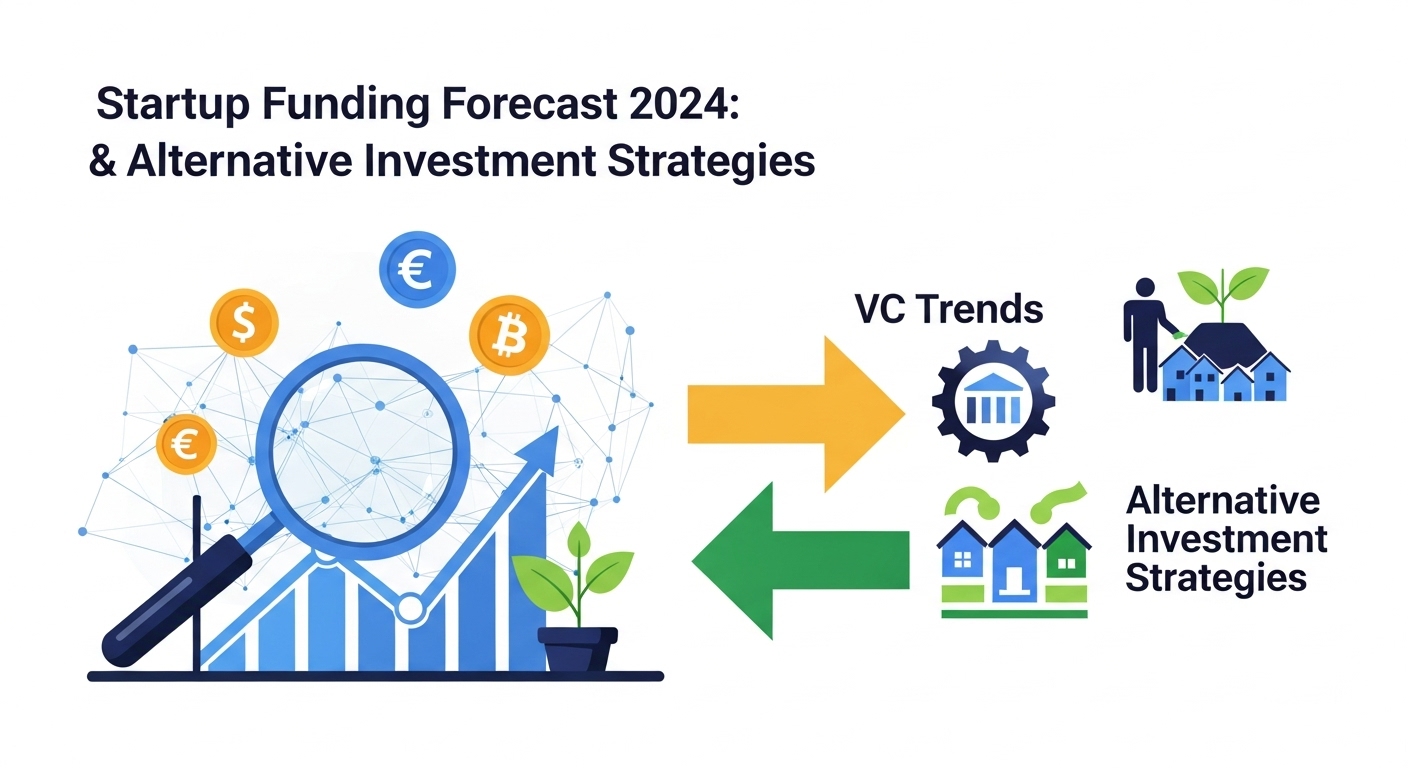The Shifting Tides of Startup Capital in 2024
The exhilarating, cash-flush days of a few years ago feel like a distant memory for many in the world of tech startups and innovation. The mantra has shifted from ‘growth at all costs’ to ‘smart, sustainable growth.’ As we navigate 2024, the startup funding landscape has matured, presenting both new challenges and unique opportunities. Gone are the days of securing multi-million dollar rounds on the back of a pitch deck and a dream. Today, venture capitalists (VCs) are more discerning, valuations are more grounded, and the path to profitability is scrutinized from day one. But this isn’t a eulogy for startup funding; it’s a guide to the new reality. For savvy founders who understand the new rules of the game, capital is still very much available. This forecast will dissect the dominant VC trends of 2024 and illuminate the increasingly vital world of alternative investment strategies that can fuel your venture’s journey.
The New Normal: A Closer Look at the 2024 VC Landscape
The venture capital world has undergone a significant recalibration. The market correction has weeded out speculative excess, forcing a return to fundamental business principles. This ‘new normal’ is defined by caution, diligence, and a laser focus on tangible value.
Due Diligence Goes Deeper Than Ever
In 2024, a VC’s due diligence process is less of a checkbox exercise and more of a forensic investigation. Investors are digging deep into the core mechanics of a business. Be prepared for rigorous questioning about your unit economics, customer acquisition cost (CAC), lifetime value (LTV), and churn rates. They want to see a clear, data-backed path to profitability, not just a hockey-stick growth chart. Founders must have an intimate understanding of their financials and be able to defend their assumptions with concrete evidence. The quality of your team, the defensibility of your technology, and your market positioning are also under the microscope. A strong narrative is still important, but it must be supported by an even stronger foundation of metrics.
Sector-Specific Focus: Where the Smart Money is Going
While funding has tightened across the board, certain sectors continue to attract significant investment due to their transformative potential and long-term resilience. These are the areas where tech startups and innovation are poised to make the biggest impact.
- Artificial Intelligence (AI): Unsurprisingly, AI remains the dominant force. From generative AI applications to AI-driven enterprise SaaS platforms that enhance efficiency, investors are betting big on companies that can intelligently automate processes and unlock new capabilities.
- Climate Tech and Sustainability: With growing global pressure for environmental responsibility, Climate Tech is no longer a niche interest. VCs are actively funding solutions in renewable energy, carbon capture, sustainable agriculture, and circular economy models.
- HealthTech: The intersection of technology and healthcare continues to be a hotbed of innovation. Digital therapeutics, personalized medicine, and AI-powered diagnostics are attracting capital from investors looking for ventures that can improve patient outcomes and streamline healthcare delivery.
The Great Valuation Reset
The days of billion-dollar valuations for pre-revenue companies are largely over. The market has corrected, and founders must approach fundraising with realistic valuation expectations. This reset can actually be healthy for the ecosystem. It forces startups to be more capital-efficient and build more resilient businesses from the start. Instead of chasing an inflated number, the focus is now on finding the right partners at a fair valuation that allows for healthy growth and avoids down rounds in the future. This pragmatism benefits both founders and investors by setting a more sustainable trajectory for long-term success.
Beyond Traditional VC: Exploring Alternative Funding Avenues
For many startups, the traditional VC path may not be the right fit, or it may not be the only path. The diversification of funding sources is one of the most exciting developments in the 2024 landscape. Smart founders are creating a capital stack that blends different types of investment to minimize dilution and maximize flexibility.
Venture Debt: A Powerful Complement to Equity
Venture debt is a form of debt financing provided to venture-backed companies. It acts as a complement, not a replacement, for equity funding. The primary advantage is that it’s less dilutive than raising another equity round. Startups often use venture debt to extend their runway between funding rounds, finance equipment, or fund working capital without giving up significant ownership. While it comes with interest payments and covenants, for a company with a clear path to generating revenue, it can be a strategic tool to fuel growth efficiently.
Revenue-Based Financing (RBF): Funding Tied to Your Success
Revenue-Based Financing is gaining significant traction, especially for SaaS, e-commerce, and other businesses with predictable, recurring revenue. In an RBF model, a company receives capital in exchange for a percentage of its future monthly revenues until a predetermined repayment cap is reached. It’s non-dilutive, and repayments are tied directly to your cash flow—if you have a slow month, you pay back less. This alignment of interests makes it an attractive option for founders who want to maintain control and avoid the board seats and pressures that often come with VC funding.
Crowdfunding: Democratizing Investment
Crowdfunding platforms have matured into powerful fundraising tools. There are two main types to consider:
- Equity Crowdfunding: Platforms like Republic and StartEngine allow startups to raise capital from a large pool of non-accredited investors in exchange for equity. It’s a great way to turn your customers and community into investors and brand evangelists.
- Reward-Based Crowdfunding: Sites like Kickstarter and Indiegogo are ideal for B2C hardware or product companies. You can pre-sell your product to fund its initial production run, validating market demand and generating non-dilutive cash flow simultaneously.
How to Prepare for a Successful 2024 Fundraise
In this competitive climate, preparation is everything. You can’t just show up to a pitch meeting and hope for the best. Success requires a strategic and disciplined approach.
Master Your Metrics and Narrative
Know your numbers cold. Be ready to discuss your burn rate, runway, gross margins, and key performance indicators (KPIs) at a moment’s notice. But numbers alone aren’t enough. You need to weave them into a compelling narrative. What is the massive problem you are solving? Why is your team uniquely equipped to solve it? How will your business not only survive but thrive in the current economic climate? Your story should be one of resilience, vision, and inevitable success.
Build Relationships, Not Just a Contact List
Fundraising is a relationship business. Don’t wait until you need money to start networking. Identify investors who specialize in your sector and stage. Follow them on social media, engage with their content, and look for warm introductions. The goal isn’t just to get a check; it’s to find a long-term partner who can provide strategic guidance, industry connections, and support through the ups and downs of the startup journey. A ‘spray and pray’ approach to investor outreach is a waste of time in 2024.
Conclusion: Charting Your Course in the New Funding Era
The startup funding forecast for 2024 is clear: the environment is challenging but far from closed. It’s a market that rewards substance over hype, profitability over potential, and resilience over rapid, unsustainable growth. The most successful founders will be those who embrace this new reality. They will build lean, efficient businesses, master their metrics, and explore a diverse range of funding options beyond traditional venture capital. This is a moment for strategic thinking and disciplined execution. For the tech startups and innovation leaders who can adapt and prove their value, the capital and opportunities to build truly transformative companies are waiting. The maze may be more complex, but a clear path to success is there for those willing to chart it carefully.


